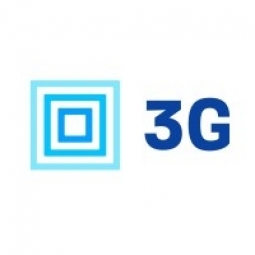Customer Company Size
Large Corporate
Region
- America
Country
- United States
Product
- 3G Pacejet Shipping
- NetSuite ERP
Tech Stack
- Cloud-based Solution
- Multi-Level Scan-Pack Functionality
Implementation Scale
- Enterprise-wide Deployment
Impact Metrics
- Productivity Improvements
- Customer Satisfaction
Technology Category
- Functional Applications - Warehouse Management Systems (WMS)
- Functional Applications - Enterprise Resource Planning Systems (ERP)
Applicable Industries
- E-Commerce
- Retail
Applicable Functions
- Warehouse & Inventory Management
- Logistics & Transportation
Use Cases
- Warehouse Automation
- Inventory Management
Services
- System Integration
- Software Design & Engineering Services
About The Customer
Mercury Promotions & Fulfillment, established in 1996, is a global leader in promotional product packaging and fulfillment services. Based in Sterling Heights, Michigan, the company is renowned for its extensive range of branded merchandise, including logo pens, t-shirts, and custom packaging. Operating from a 250,000 square foot facility, Mercury serves a diverse clientele with varying product quantities and global shipping destinations. The company is committed to delivering high-quality products and exceptional customer service, emphasizing brand identity and operational efficiency.
The Challenge
Mercury Promotions & Fulfillment faced challenges with their existing shipping systems, which were disjointed and on-premise, lacking essential features like label functionality, rate shopping, and sophisticated scanning or packing capabilities. These limitations led to errors in the shipment process and restricted scalability beyond two workstations, hindering warehouse output as volumes increased. Additionally, the company sought to reduce manual labor time and costs while finding cost-effective shipping methods.
The Solution
Mercury implemented Pacejet's cloud-based shipping solution, which offered a single-platform interface with features like rate shopping, scan-pack, and quality checks. This integration with NetSuite's ERP and WMS platforms provided an all-in-one view of their systems, enhancing process efficiency. The Multi-Level Scan-Pack functionality added a layer of quality control, allowing Mercury to track specific items within deliveries. The intuitive platform significantly reduced onboarding time for new hires, from two days to just one hour, and streamlined warehouse operations by minimizing manual tasks.
Operational Impact
Quantitative Benefit

Case Study missing?
Start adding your own!
Register with your work email and create a new case study profile for your business.
Related Case Studies.

Case Study
Improving Production Line Efficiency with Ethernet Micro RTU Controller
Moxa was asked to provide a connectivity solution for one of the world's leading cosmetics companies. This multinational corporation, with retail presence in 130 countries, 23 global braches, and over 66,000 employees, sought to improve the efficiency of their production process by migrating from manual monitoring to an automatic productivity monitoring system. The production line was being monitored by ABB Real-TPI, a factory information system that offers data collection and analysis to improve plant efficiency. Due to software limitations, the customer needed an OPC server and a corresponding I/O solution to collect data from additional sensor devices for the Real-TPI system. The goal is to enable the factory information system to more thoroughly collect data from every corner of the production line. This will improve its ability to measure Overall Equipment Effectiveness (OEE) and translate into increased production efficiencies. System Requirements • Instant status updates while still consuming minimal bandwidth to relieve strain on limited factory networks • Interoperable with ABB Real-TPI • Small form factor appropriate for deployment where space is scarce • Remote software management and configuration to simplify operations

Case Study
Digital Retail Security Solutions
Sennco wanted to help its retail customers increase sales and profits by developing an innovative alarm system as opposed to conventional connected alarms that are permanently tethered to display products. These traditional security systems were cumbersome and intrusive to the customer shopping experience. Additionally, they provided no useful data or analytics.

Case Study
How Sirqul’s IoT Platform is Crafting Carrefour’s New In-Store Experiences
Carrefour Taiwan’s goal is to be completely digital by end of 2018. Out-dated manual methods for analysis and assumptions limited Carrefour’s ability to change the customer experience and were void of real-time decision-making capabilities. Rather than relying solely on sales data, assumptions, and disparate systems, Carrefour Taiwan’s CEO led an initiative to find a connected IoT solution that could give the team the ability to make real-time changes and more informed decisions. Prior to implementing, Carrefour struggled to address their conversion rates and did not have the proper insights into the customer decision-making process nor how to make an immediate impact without losing customer confidence.

Case Study
Ensures Cold Milk in Your Supermarket
As of 2014, AK-Centralen has over 1,500 Danish supermarkets equipped, and utilizes 16 operators, and is open 24 hours a day, 365 days a year. AK-Centralen needed the ability to monitor the cooling alarms from around the country, 24 hours a day, 365 days a year. Each and every time the door to a milk cooler or a freezer does not close properly, an alarm goes off on a computer screen in a control building in southwestern Odense. This type of alarm will go off approximately 140,000 times per year, equating to roughly 400 alarms in a 24-hour period. Should an alarm go off, then there is only a limited amount of time to act before dairy products or frozen pizza must be disposed of, and this type of waste can quickly start to cost a supermarket a great deal of money.

Case Study
Supermarket Energy Savings
The client had previously deployed a one-meter-per-store monitoring program. Given the manner in which energy consumption changes with external temperature, hour of the day, day of week and month of year, a single meter solution lacked the ability to detect the difference between a true problem and a changing store environment. Most importantly, a single meter solution could never identify root cause of energy consumption changes. This approach never reduced the number of truck-rolls or man-hours required to find and resolve issues.








